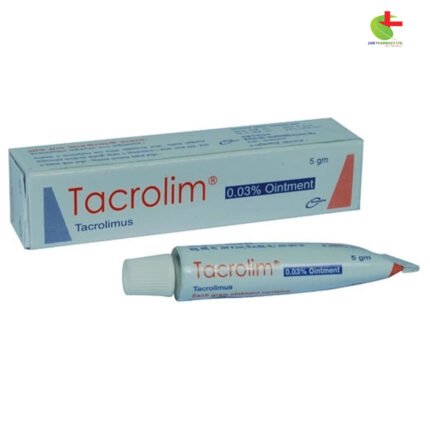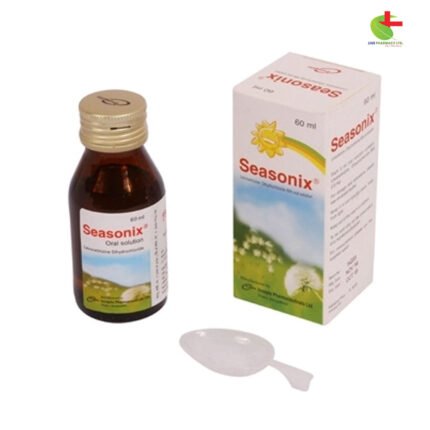Inolac
140.00৳ Bottle (100ml)
- Inolac is a hyperosmolar laxative that treats chronic constipation by drawing water into the intestines to promote soft stools and ease bowel movements.
- It helps restore intestinal flora balance, particularly after long-term antibiotic use or in conditions like colitis and diverticulosis.
- Lactulose, the active ingredient, is minimally absorbed and works by creating an osmotic effect that stimulates peristalsis.
- Inolac is also effective in managing elevated blood ammonia levels in liver conditions like hepatic encephalopathy.
 Brand
Brand
|
Incepta Pharmaceuticals Ltd |
|---|---|
 Generics
Generics
|
Lactulose |
 Type
Type
|
Oral Solution |
Indications
For chronic constipation, the primary treatment should focus on a diet rich in fiber (such as vegetables, salads, fruits), increased water intake, and regular physical activity. Inolac should only be considered when these natural methods prove inadequate.
Disruptions in Intestinal Flora:
- After damage to intestinal flora, such as following prolonged antibiotic use
- Gallbladder disorders
- Intestinal conditions (e.g., Colitis, Diverticulosis, Megacolon)
Elevated Blood Ammonia Levels: In cases of hyperammonemia associated with liver disease or portal-systemic encephalopathy.
Take this medication only under the advice of a registered physician.
Description
Inolac is a hyperosmolar laxative used to effectively manage constipation. It’s a non-absorbable disaccharide that works by drawing water into the intestines, which leads to the softening of stools and enhances bowel movement.
Pharmacology
Lactulose, the active ingredient in Inolac, is a synthetic disaccharide. Once metabolized by saccharolytic bacteria in the colon, it produces organic acids that lower the pH within the colon. This osmotic effect retains water in the intestine, boosting peristaltic activity. Since lactulose is minimally absorbed, its pharmacokinetics are not a significant factor in its therapeutic use.
Dosage & Administration
For Chronic Constipation:
- Adults: Start with 3-6 teaspoons daily; for long-term use, 1½-6 teaspoons daily.
- Children (up to 14 years): Begin with 3 teaspoons daily; long-term use is 1-2 teaspoons daily.
- Infants and Toddlers: Initial dose is 1-2 teaspoons daily; long-term treatment involves 1 teaspoon daily.
For Intestinal Flora Imbalance:
- Adults: 1-2 teaspoons per day.
- Children: 1 teaspoon daily.
To Reduce Blood Ammonia Levels:
- For hyperammonemia due to liver disease: up to 18-30 teaspoons daily.
- In portal-systemic encephalopathy: hourly doses of 6-9 teaspoons may be administered until rapid bowel movement occurs, followed by a reduction in dosage.
Take this medication only under the guidance of a registered physician.
Drug Interactions
There are no significant drug interactions with Inolac. However, potassium deficiency, typically caused by overuse, can intensify the effect of cardiac glycosides.
Contraindications
Inolac is contraindicated in individuals with hypersensitivity to galactose or lactose, those on a galactose-free diet, those with gastro-cardiac syndromes, or suspected intestinal obstruction.
Side Effects
Occasionally, patients may experience gas, cramping, or abdominal discomfort at the beginning of treatment, which can be resolved by reducing the dose. Overuse may result in diarrhea, and chronic abuse may cause electrolyte imbalance, particularly potassium loss.
Use During Pregnancy & Lactation
FDA Pregnancy Category B: Lactulose has been shown to pose no adverse effects. However, decisions regarding its use during pregnancy or breastfeeding should be made by a registered physician.
Precautions
Caution is advised when prescribing Inolac to patients with lactose intolerance. The higher doses required for treating hepatic encephalopathy should be carefully considered in diabetic patients.
Overdose Effects
While no cases of accidental overdose have been reported, symptoms like diarrhea and abdominal cramps are expected in cases of overdose.
Therapeutic Class
Osmotic Laxatives
Storage Instructions
Store in a cool, dry place, away from direct sunlight and heat. Keep out of reach of children.













Reviews
There are no reviews yet.